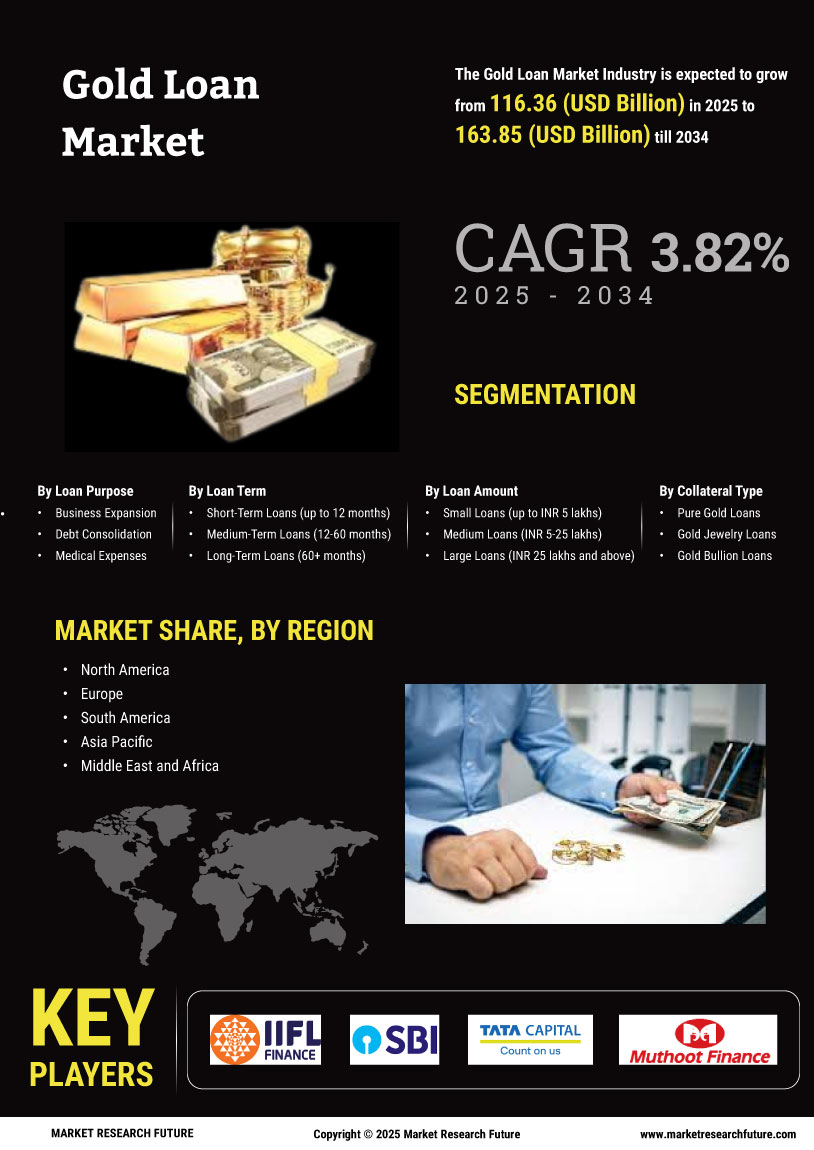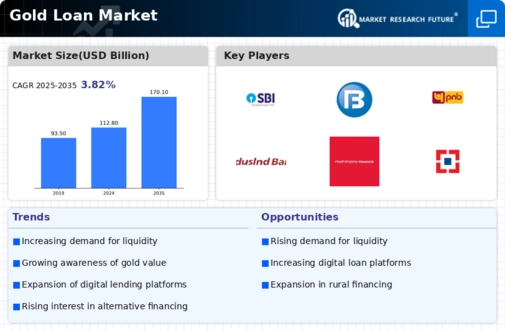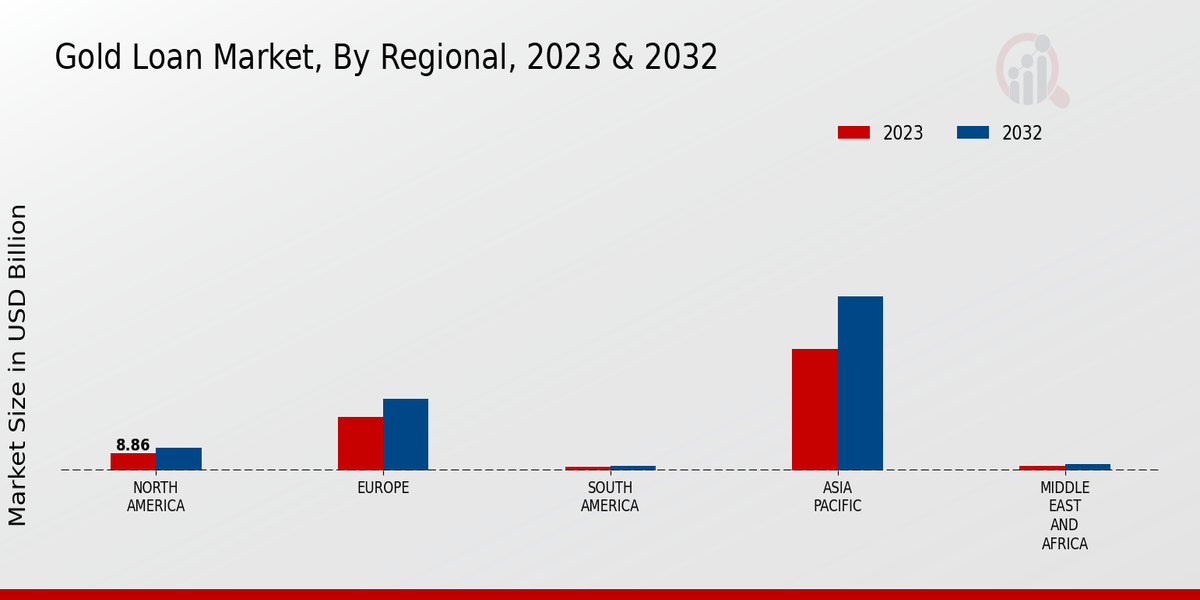Rising Gold Prices
Fluctuating gold prices significantly influence the Global Gold Loan Market Industry. As gold prices rise, the value of collateral increases, thereby enhancing the loan amounts that borrowers can secure. This dynamic encourages more individuals to consider gold loans as a viable financial option. In recent years, the price of gold has shown an upward trend, which could potentially lead to a higher market valuation. By 2035, the market is anticipated to grow to 170.1 USD Billion, reflecting the correlation between gold prices and loan uptake. This relationship underscores the importance of gold as a financial asset in the lending landscape.
Market Growth Projections
The Global Gold Loan Market Industry is poised for substantial growth, with projections indicating a market size of 112.8 USD Billion in 2024 and an anticipated increase to 170.1 USD Billion by 2035. This growth trajectory suggests a robust compound annual growth rate (CAGR) of 3.81% from 2025 to 2035. Such figures reflect the increasing acceptance of gold loans as a reliable financial instrument across various demographics. The market's expansion is likely to be fueled by rising consumer awareness, favorable economic conditions, and the growing trend of leveraging gold assets for financial needs.
Increasing Demand for Gold Loans
The Global Gold Loan Market Industry experiences a notable surge in demand as individuals seek quick and accessible financing solutions. In 2024, the market is projected to reach 112.8 USD Billion, driven by a growing awareness of gold as a valuable asset for securing loans. This trend is particularly pronounced in emerging economies, where traditional banking services may be limited. The flexibility and lower interest rates associated with gold loans appeal to a diverse demographic, including small business owners and individuals facing financial constraints. As a result, the industry is likely to expand, catering to the evolving needs of consumers.
Regulatory Support for Gold Lending
Regulatory frameworks play a crucial role in shaping the Global Gold Loan Market Industry. Governments are increasingly recognizing the importance of gold loans in promoting financial stability and economic growth. Supportive regulations can enhance consumer confidence and encourage lending institutions to offer competitive products. For instance, some countries have implemented guidelines that facilitate transparent valuation and appraisal of gold, ensuring fair practices in the industry. This regulatory backing not only protects consumers but also fosters a conducive environment for market expansion. As the industry matures, ongoing regulatory support is likely to be a key driver of growth.
Expansion of Financial Inclusion Initiatives
The Global Gold Loan Market Industry benefits from ongoing financial inclusion initiatives aimed at providing underserved populations with access to credit. Governments and financial institutions are increasingly recognizing the potential of gold loans as a means to empower individuals who lack traditional banking relationships. These initiatives often focus on rural areas, where gold ownership is prevalent but access to formal credit is limited. By facilitating gold-backed lending, these programs not only enhance financial literacy but also stimulate economic growth. As a result, the industry is likely to witness increased participation from previously excluded segments of the population.
Technological Advancements in Lending Processes
Technological innovations are reshaping the Global Gold Loan Market Industry by streamlining lending processes and enhancing customer experiences. Digital platforms enable quicker loan approvals and disbursements, making gold loans more accessible to a broader audience. The integration of artificial intelligence and data analytics allows lenders to assess risk more accurately, thereby improving the overall efficiency of the lending process. As these technologies continue to evolve, they are expected to attract a younger demographic that prefers digital solutions. This shift could further accelerate the growth of the market, aligning with the projected CAGR of 3.81% for 2025-2035.










